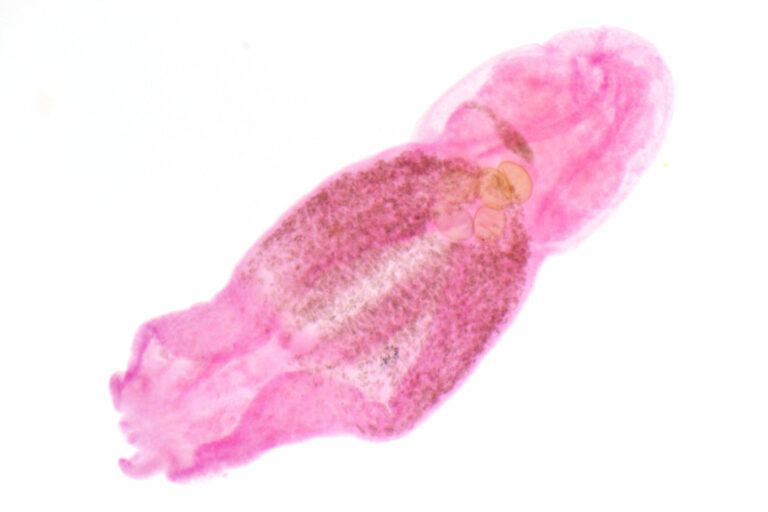Alaria alata

Carnivores – Omivores
The muscular fluke Alaria alata, commonly known as the Dunker’s fluke, is a parasitic trematode that inhabits the small intestine of carnivores as an adult, measuring 2-6 mm in length (Jakšić, Uhitil & Vučemilo 2002) (Möhl et al. 2009). The first larval stage, called the miracidium, utilizes freshwater snails as intermediate hosts, while the second stage, known as the mesocercaria, can infect both carnivores and other intermediate hosts such as amphibians, reptiles, or rodents (Bilska-Zając et al. 2021). Infection occurs through the ingestion of infected meat (Jakšić, Uhitil & Vučemilo 2002).
Human pathogenicity: In humans, this fluke can cause a condition known as larval alariosis, where organs such as the liver, lungs, spinal cord, or blood vessels can be affected by the mesocercaria (Jakšić, Uhitil & Vučemilo 2002).
-
Bilska-Zając et al. (2021)Occurrence of Alaria alata in wild boars (Sus scrofa) in Poland and detection of genetic variability between isolates. In : Parasitology Research, vol. 120, n° 1, p. 83–91
-
Jakšić et al. (2002)Nachweis von Mesozerkarien des Saugwurms Alaria alata im Wildschweinefleisch. In : European Journal of Wildlife Research, vol. 48, n° 3, p. 203–207.
-
Möhl et al. (2009)Biology of Alaria spp. and human exposition risk to Alaria mesocercariae-a review. In : Parasitology Research, vol. 105, n° 1, p. 1–15.